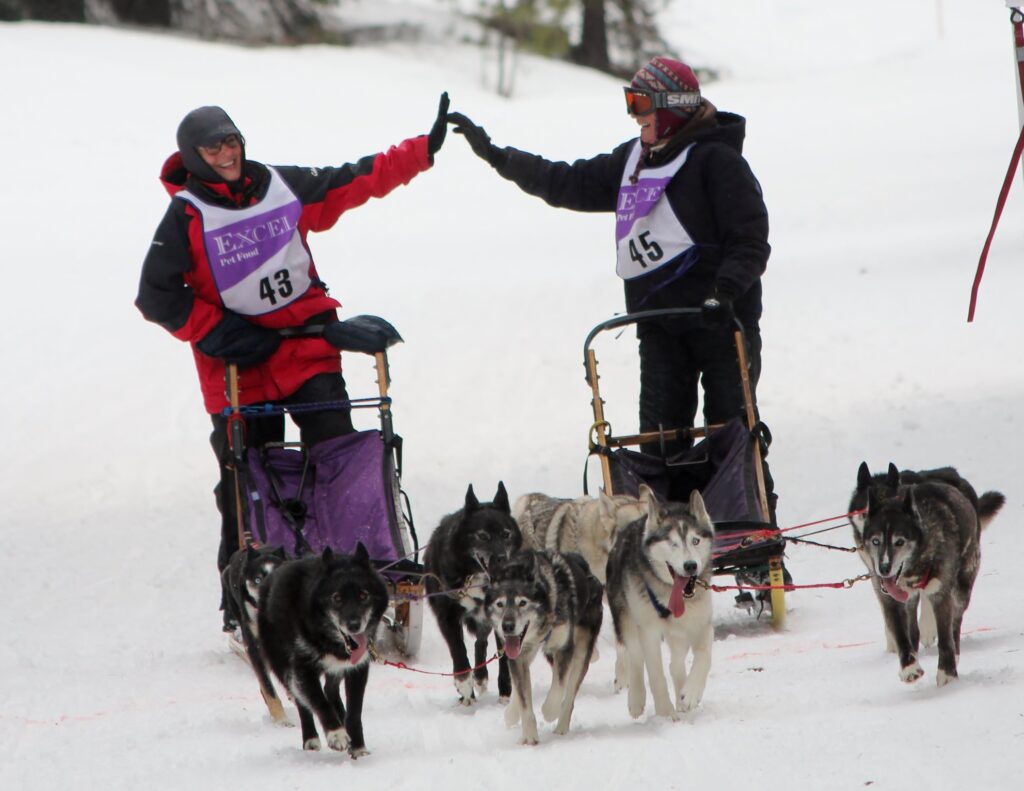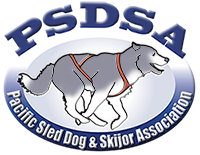Most people get started in mushing using small teams in the sprint races. You can start training right away for the 1 and 2 dog or junior events if you have a pet dog who likes to run and is strong enough to pull you. Not everyone is interested in racing, and that is okay too.

You will need to learn how to teach your dog. One of the best teachers for a dog is another dog. A good way to start is to get an experienced sled dog. It is always fun to have a cute puppy, but if you are serious about mushing, it is easier to start with a dog who knows about the sport and can help teach you.
You can find trained sled dogs by going to races and talking with mushers, by joining a sled dog club, and by reading sled dog publications. You will find that mushers love to talk about their dogs. Most mushers remember when they were starting out in the sport and will offer to help. Finding a mentor that shares your training style is the best way to learn.
If you join a club, you can meet many helpful people. Some clubs have Junior Musher divisions to help children begin. In some areas, groups like the 4H have Junior Musher clubs.
GETTING THE NEW DOG
Once you have decided to buy an experienced dog, you should think about the kind of dog you would like. You don’t need the world’s fastest dog, not yet.
Sled dogs come in a variety of shapes and sizes. While almost any dog can be taught to pull a sled, certain breeds are more popular and better suited. First is the Alaskan Husky, probably the most popular dog used for racing today. They will weigh between 35 and 65 pounds depending on the breeder’s line. Although the Alaskan Husky is not a recognized purebred by the AKC or other registries, their lineage is as traceable as the purebreds. Next is the Siberian Husky which will weigh between 35 and 60 pounds. The third breed is the Samoyed which will weigh between 50 and 75 pounds. The fourth breed is the Alaskan Malamute. While not as popular for racing, these 85 to 130 pound giants are well suited for freight work and recreational mushing. Another breed commonly seen in sprint races is the German Shorthaired Pointer. These dogs are popular with the skijoring and pulk racers of Europe and are becoming more common for sled work in this country and Europe.
A smart and obedient dog who is patient with new mushers is the dog for you. A dog who has been a successful leader but now is a little too old or slow for a senior musher’s team might be just right to help you train a pet dog to make your two-dog team. If you can promise to give the dog a good home, you may not have to pay much money.
Write a list of questions to ask the dog’s owner because you will need to know a lot about your new dog. Some of these questions might sound like these:
What sled dog and other command words does the dog understand and obey? What type and size of harness is best for him? Is the dog used to walking on a leash? What kind of food does the dog eat? Can you give me a record of his vaccinations? Has the dog been spayed or neutered? What are the dog’s best point? What are his bad habits? Can I call or write to you if I have questions?
